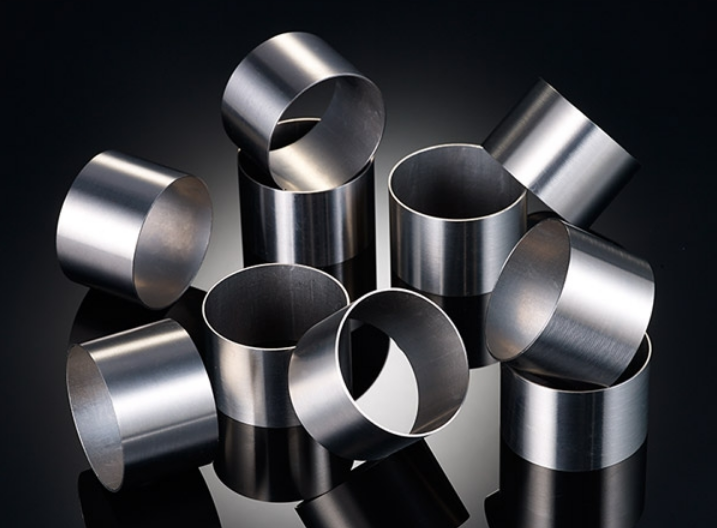Generally speaking, Welded Titanium Tube performance: Welded Titanium Tube is a new type of metal. The performance of titanium is related to the impurity content of carbon, nitrogen, hydrogen, oxygen and so on. The impurity content of the purest titanium iodide is not more than 0.1%, but its strength is low and its plasticity is high. The properties of 99.5% industrial pure titanium are: density ρ=4.5g/ cubic cm, melting point 1725℃, thermal conductivity λ=15.24W/(m.K), tensile strength σb=539MPa, elongation δ=25%, section shrinkage ratio ψ=25%, elastic modulus E=1.078×105MPa, hardness HB195.
The alloy-element titanium has two kinds of isocrystals: close-packed hexagonal α titanium below 882℃, and body-centered cubic β titanium above 882℃.
Based on their effect on the temperature of the transition

Alloying elements can be classified into three categories according to their effects on the phase transition temperature:
① The elements that stabilize the α phase and increase the phase transition temperature are the α stable elements, including aluminum, carbon, oxygen and nitrogen. Aluminum is the main alloying element of titanium alloy, which has obvious effect on improving the strength of alloy at room temperature and high temperature, reducing specific gravity and increasing elastic modulus. ② The elements that stabilize β phase and reduce the transformation temperature are β stable elements, which can be divided into two types: isomorphic and eutectoid. The former has molybdenum, niobium, vanadium and so on; The latter has chromium, manganese, copper, iron, silicon and so on.
③ The elements that have little effect on the temperature of phase transformation are neutral elements, such as zirconium and tin.
Oxygen, nitrogen, carbon and hydrogen are the main impurities of titanium alloy. The high solubility of oxygen and nitrogen in the α phase can strengthen titanium alloy significantly, but reduce the ductility. The content of oxygen and nitrogen in titanium is generally prescribed to be below 0.15 ~ 0.2% and 0.04 ~ 0.05%, respectively. Hydrogen has very little solubility in the alpha phase, and too much hydrogen dissolved in a titanium alloy will produce hydrides, making the alloy brittle. Generally, the hydrogen content of titanium alloys is controlled below 0.015%. The dissolution of hydrogen in titanium is reversible and can be removed by vacuum annealing.
According to the composition of the phase
According to the phase composition, titanium alloy can be divided into three categories :α alloy,(α+β) alloy and β alloy, which are respectively represented by TA, TC and TB in China.
①α alloy contains a certain amount of stable α phase elements, and is mainly composed of α phase in equilibrium state. α alloy has low specific gravity, good thermal strength, good weldability and excellent corrosion resistance, the disadvantage is low strength at room temperature, usually used as heat resistant materials and corrosion resistant materials. α alloys are generally classified as all-α alloys (TA7), near-α alloys (Ti-8Al-1Mo-1V), and α alloys with a few compounds (Ti-2.5Cu). ②(α+β) alloy contains a certain amount of stable α phase and β phase elements, and the microstructure of the alloy is α phase and β phase in equilibrium state. (α+β) alloy has moderate strength and can be strengthened by heat treatment, but the welding performance is poor. (α+β) alloys are widely used, among which Ti-6Al-4V alloy accounts for more than half of all titanium materials.
③β alloys contain a large number of stable β phase elements, which can keep the high temperature β phase to room temperature. β alloys are usually classified into heat-treatable β alloys (metastable β alloys and nearly metastable β alloys) and thermally stable β alloys. The heat-treatable β alloy has excellent plasticity in the quenching state, and the tensile strength can reach 130 ~ 140kgf/mm2 through aging treatment. β alloy is usually used as high strength and toughness materials. Disadvantages are larger than, high cost, poor welding performance, machining difficulties.